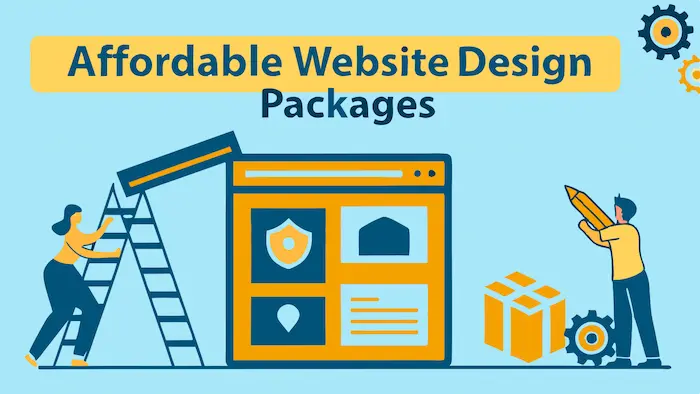Website speed is a crucial factor for user experience, search engine rankings, and conversion rates. A slow website leads to high bounce rates and poor customer engagement. In this guide, we’ll explore practical ways to improve website speed and ensure that your visitors have a smooth experience.
Did you know? Google considers page speed as a ranking factor, meaning a slow website can hurt your SEO efforts.
Why Website Speed Matters?
A fast-loading website impacts:
✔SEO Performance – Google rewards fast websites with higher rankings.
✔User Experience – Visitors expect sites to load within 2-3 seconds.
✔Conversion Rates – Slow websites lose customers and revenue.
✔Mobile Friendliness – Mobile users expect quick page loads.
How to Check Your Website Speed?
Before optimizing your site, analyze its current performance using these tools:
| Tools | Features | Website Link |
|---|---|---|
| Google PageSpeed Insights | Google’s speed test with suggestions | pagespeed.web.dev |
| GTmetrix | Detailed performance report | gtmetrix.com |
| Pingdom | Website speed testing & monitoring | tools.pingdom.com |
| WebPageTest | Advanced speed testing | webpagetest.org |
10 Proven Ways to Improve Website Speed
1. Optimize Images
Large images slow down page loading. Optimize them by:
✔Compressing images using TinyPNG or Imagify
✔Using Next-Gen Formats like WebP
✔Resizing images to fit required dimensions
Example: A 5MB image can be reduced to 300KB without losing quality.
2. Minimize HTTP Requests
Each element (images, scripts, fonts) on a webpage requires a request. Reduce these by:
✔Merging CSS & JavaScript files
✔Using CSS sprites for icons
✔Limiting third-party plugins
3. Enable Browser Caching
Caching stores frequently accessed resources, reducing page load times for returning visitors.
🔹How? Use caching plugins like:
✔WP Rocket (Premium)
✔W3 Total Cache (Free)
✔WP Super Cache (Free)
4. Use a Content Delivery Network (CDN)
A CDN distributes content across multiple global servers, reducing the time needed to load pages. Popular CDNs include:
✔Cloudflare (Free & Paid)
✔BunnyCDN
✔Amazon CloudFront
5. Minify CSS, JavaScript & HTML
Minification removes unnecessary spaces and characters from code, making it smaller and faster.
🔹Use tools like:
✔Autoptimize (WordPress Plugin)
✔Minify Code Online ( minifier.org )
6. Choose a Fast & Reliable Hosting Provider
Your hosting provider plays a huge role in site speed. Opt for:
✔Managed WordPress Hosting (eg, WP Engine, Kinsta)
✔Cloud Hosting (eg, Cloudways, DigitalOcean)
✔LiteSpeed Servers for improved performance
🔹Tip: Avoid shared hosting for high-traffic sites.
7. Remove Unnecessary Plugins & Themes
Too many plugins slow down your site.
✔Delete unused plugins
✔Use lightweight themes like Astra or GeneratePress
✔Test site performance before adding new plugins
8. Optimize Your Database
Over time, your database accumulates unnecessary data.
✔Use WP-Optimize or WP-Sweep to clean it
✔Limit post revisions
✔Remove spam comments & old data
9. Implement Lazy Loading
Lazy loading ensures that images load only when they come into view.
✔Enable lazy loading for images & videos using a3 Lazy Load plugin
✔Use native lazy loading for modern browsers
10. Use Affordable Website Design Packages for Optimization
If you’re not tech-savvy, hiring a professional web design team can save time and ensure top-notch performance.
✔ Affordable Website Design Packages often include:
- Speed Optimization
- SEO Best Practices
- Responsive Design
- CDN & Caching Setup
Investing in a professional package ensures long-term website performance and better SEO results.
1. How fast should my website load?
Ideally, your site should load in under 2 seconds. Anything above 3 seconds increases bounce rates.
2. What is the best image format for speed optimization?
WebP is the best format as it provides high quality with smaller file sizes compared to PNG or JPEG.
3. Will a slow website affect my SEO rankings?
Yes. Google prioritizes fast-loading websites. A slow site leads to poor rankings and lower traffic.
4. How do I test my website speed?
Use tools like Google PageSpeed Insights, GTmetrix, or Pingdom to analyze your site’s speed and get optimization suggestions.
5. Can I improve website speed without coding?
Yes! Use WordPress plugins like WP Rocket, Autoptimize, and WP-Optimize to enhance speed without technical knowledge.
Conclusion
Improving website speed is essential for better user experience, higher rankings, and increased conversions. By following these optimization strategies—such as compressing images, enabling caching, and using a CDN—you can significantly boost your site’s performance.
For those who want professional help, Affordable Website Design Packages provide a hassle-free way to optimize your website without the technical challenges.
🚀Take action today and watch your website’s speed, SEO rankings, and user engagement skyrocket!

